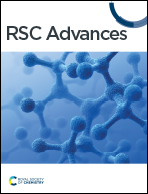Recent advances in metal-family flame retardants: a review
Abstract
The use of polymer materials is inextricably linked to our manufacturing life. However, most of them are easily combusted in the air and the combustion process generates a large amount of toxic fumes and dangerous smoke. This can result in injuries and property damage, as well as limiting their use. It is essential to enhance the flame-retardant properties and smoke suppression performance by using multiple flame retardants. Metal-based flame retardants have a unique chemical composition. They are environmentally friendly flame retardants, which can impart good smoke suppression, flame retardancy to polymers and further reduce the production of toxic gases. The differences in the compounds formed between the transition metals and the main group metals make them act differently as flame retardants for polymers. As a result, this study presents the research progress and flame-retardant mechanism of flame-retardant polymers for flame retardants from different groups of metals in the periodic table of elements in a systematic manner. In view of the differences between the main group metals and transition metals, the mechanism of their application in flame retardant polymer materials is carefully detailed, as are their distinct advantages and disadvantages. And ultimately, prospects for the development of transition metals and main group metals are outlined. It is hoped that this paper will provide valuable references and insights for scholars in the field.

- This article is part of the themed collection: 2023 Reviews in RSC Advances


 Please wait while we load your content...
Please wait while we load your content...